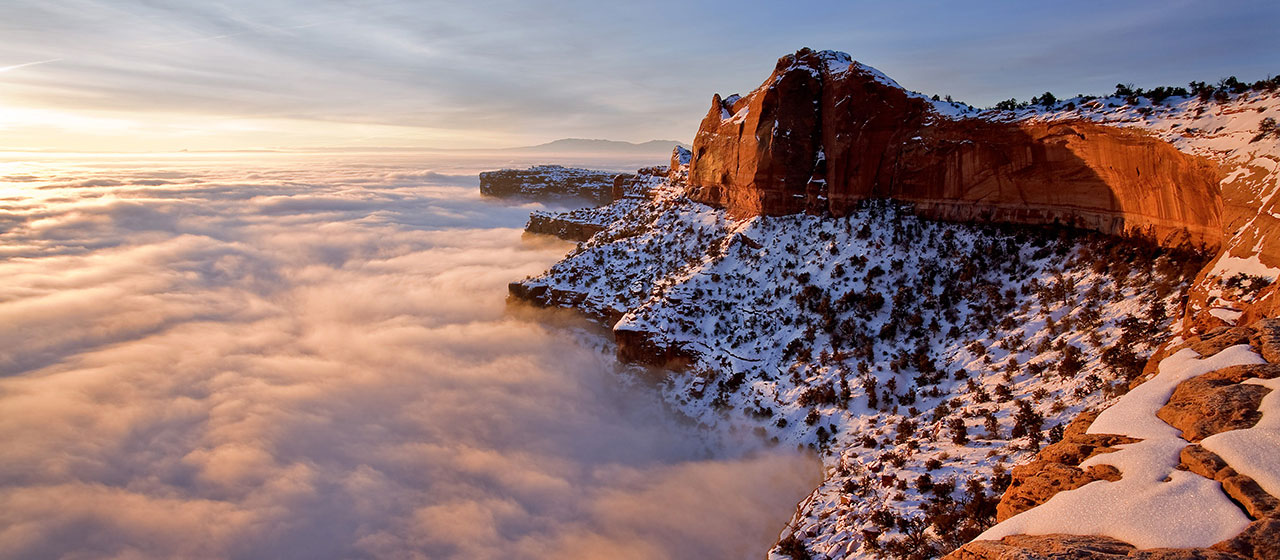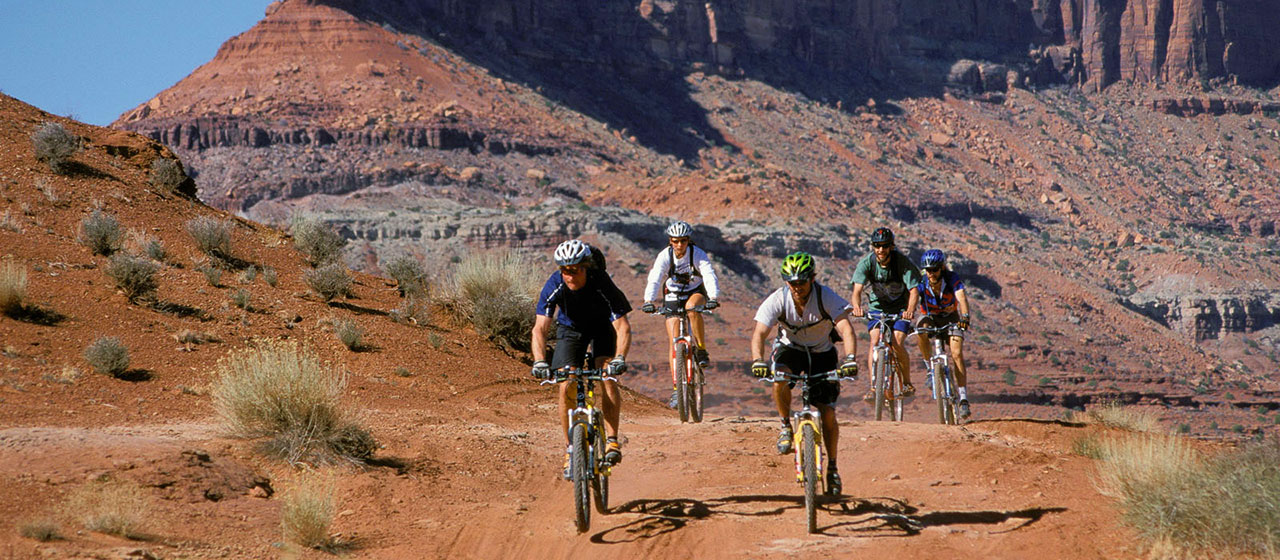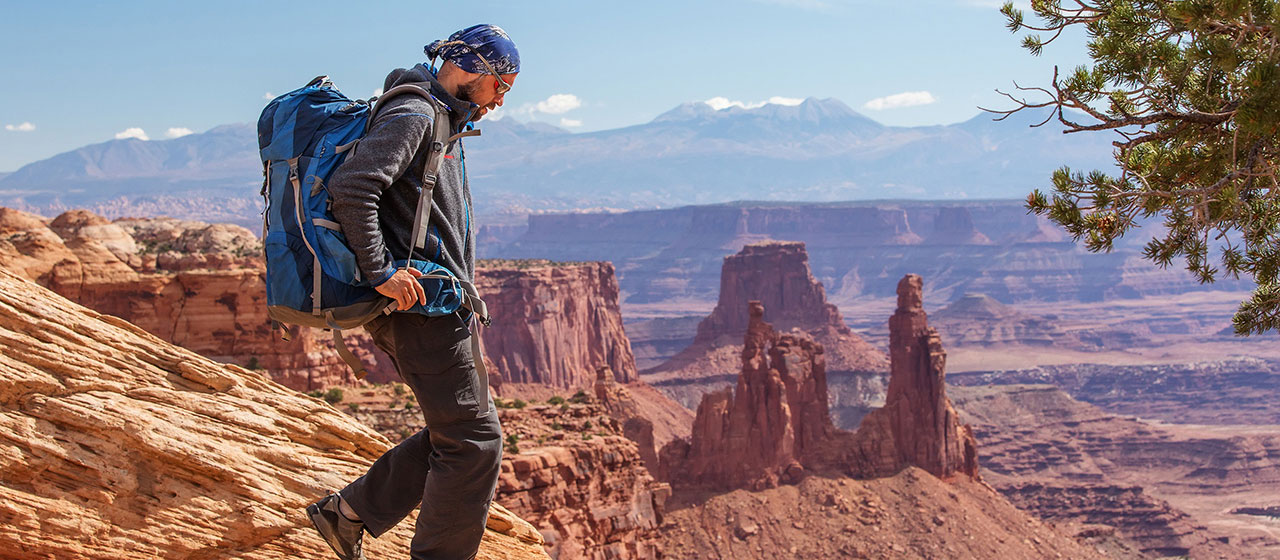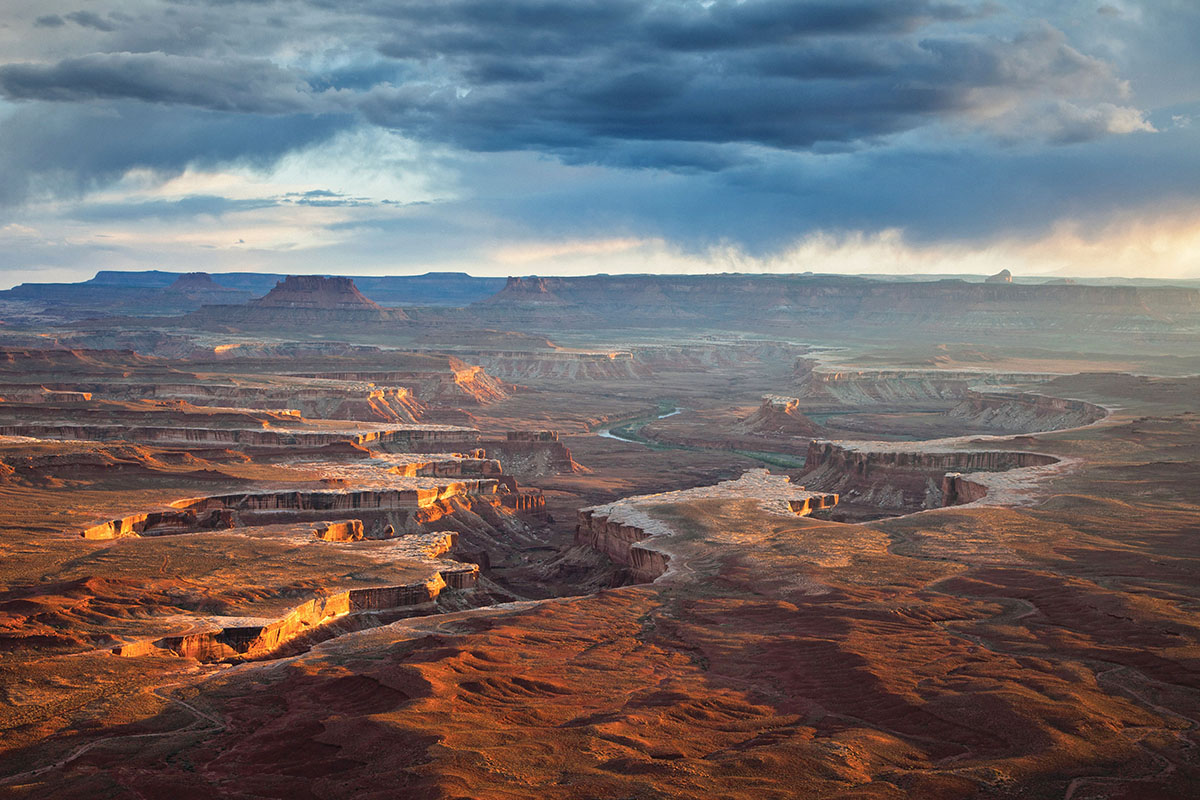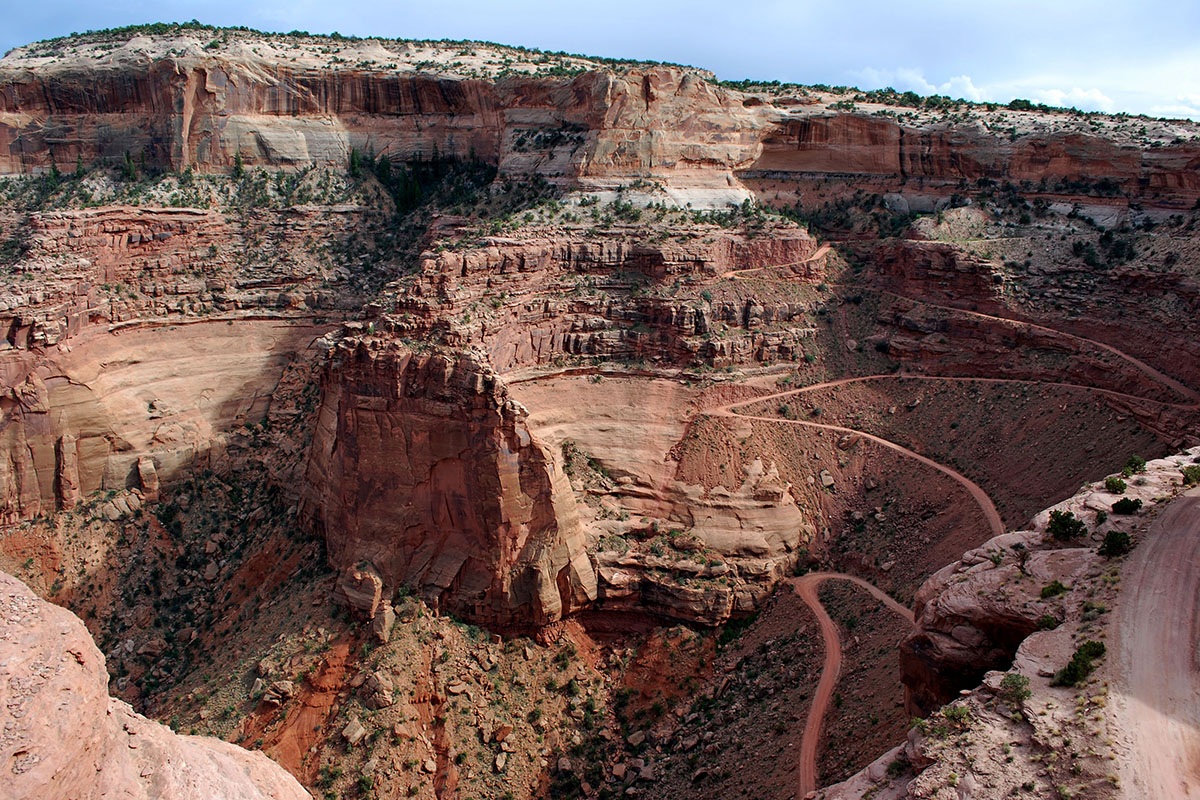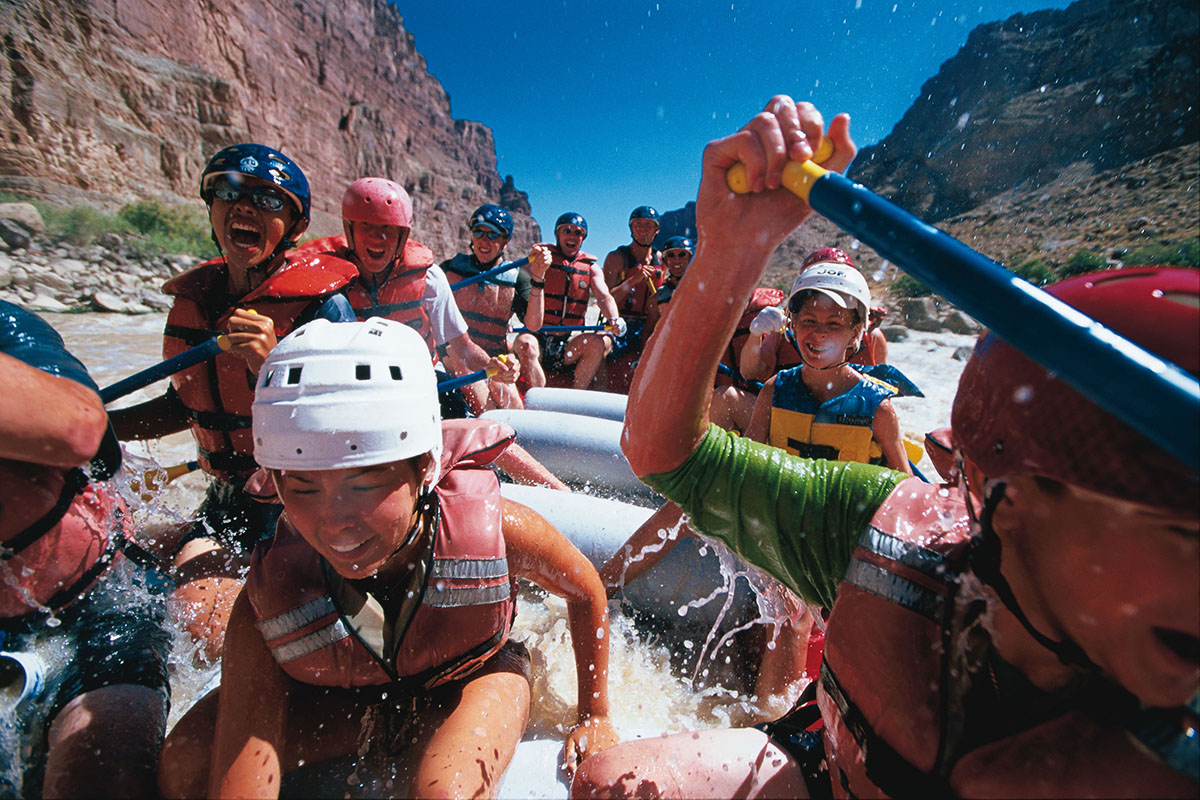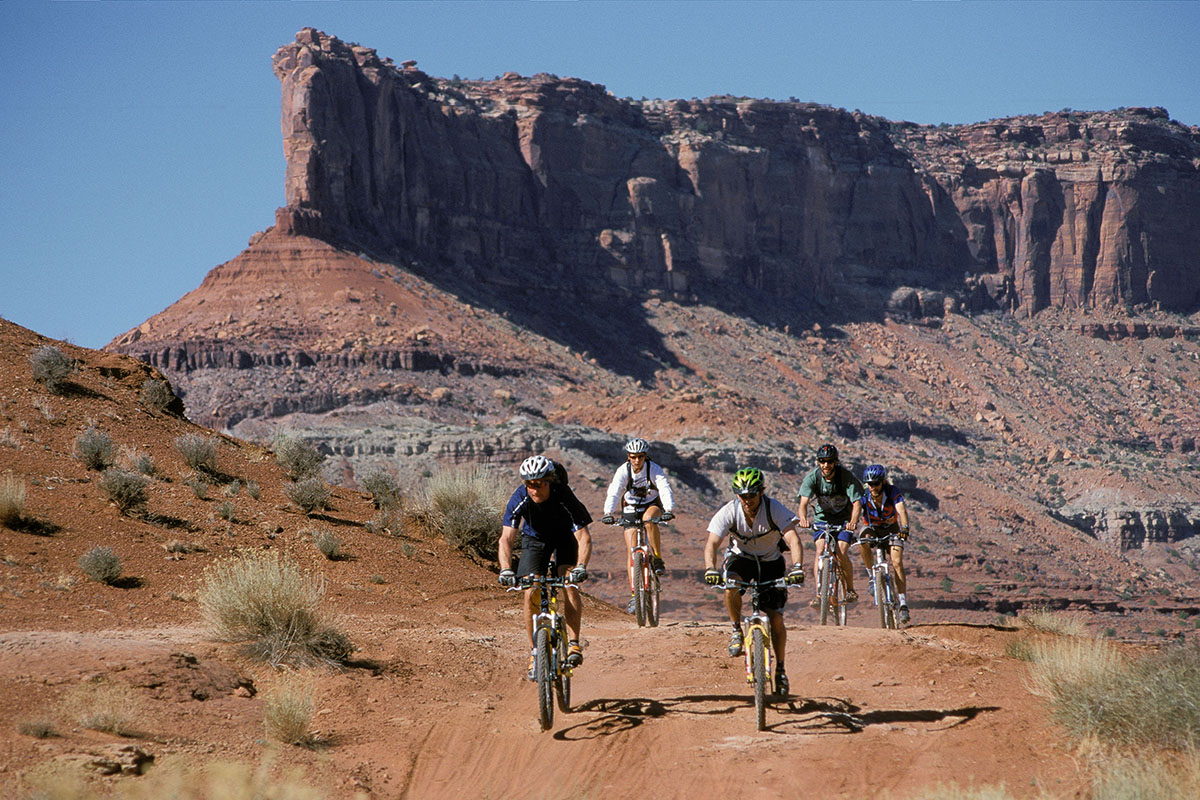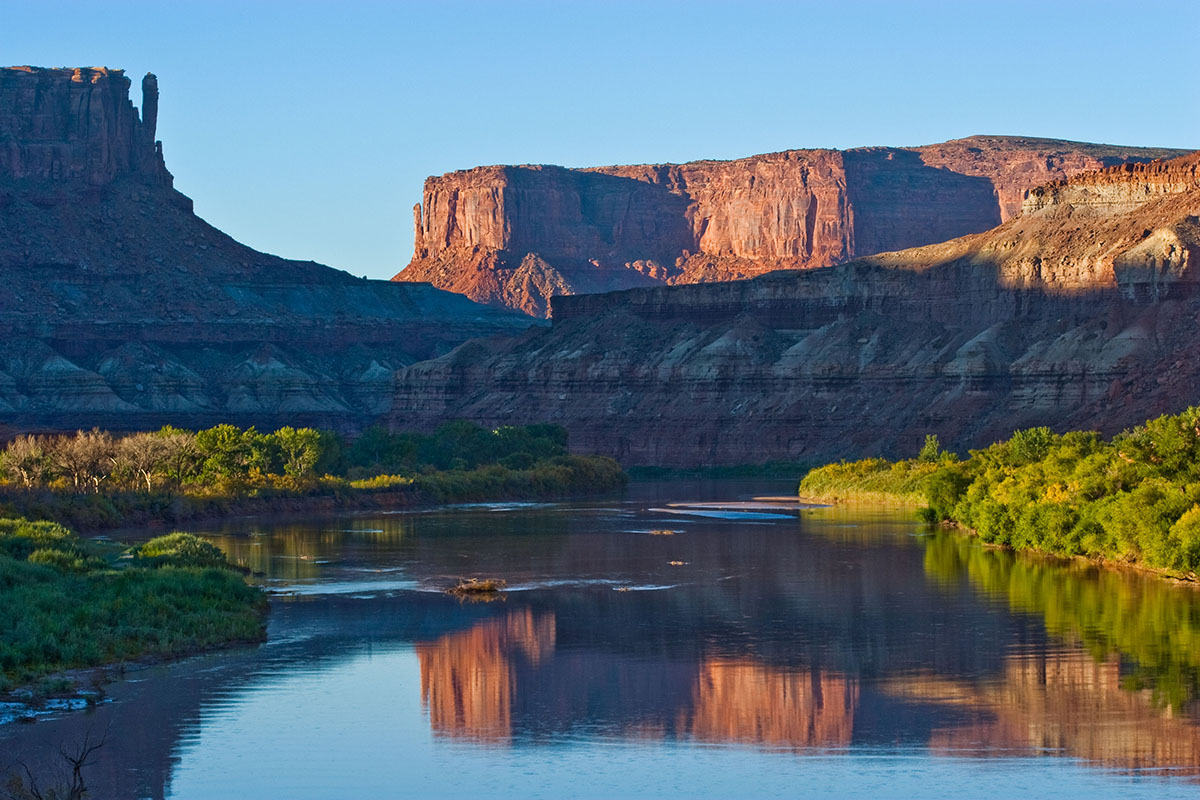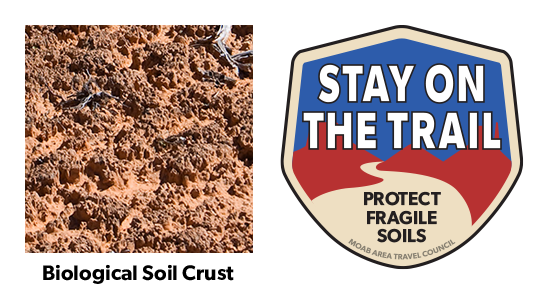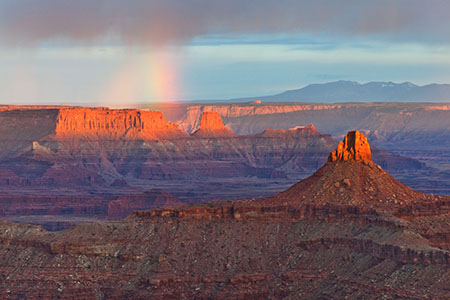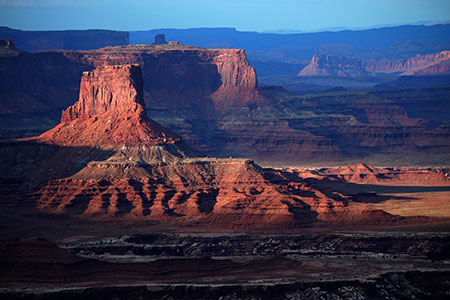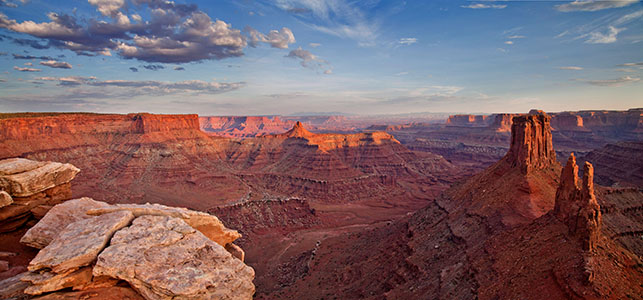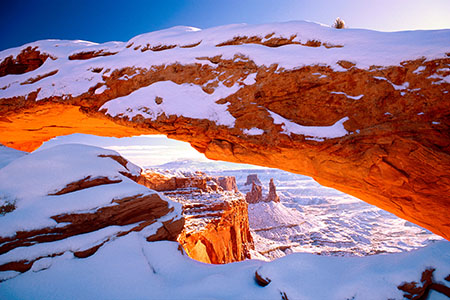With hundreds of miles of four-wheel-drive roads, Canyonlands offers ideal terrain for multi-night mountain bike trips. Most groups travel with vehicle support to haul water and gear since there are few reliable water sources along these roads. For the truly adventurous, self-supported trips with panniers and trailers are also possible. Bikes must remain on designated roads: there are no single-track trails in the park.
Things to Know
- Overnight Trips: You must have a permit for all overnight trips.
- Day Trips: You must have a permit for day trips on White Rim, Elephant Hill, Lavender Canyon, and Peekaboo/Horse Canyon roads.
Groups must camp in designated sites.
- Reservations for White Rim campsites are very competitive. You may have to make a reservation up to four months in advance.
- There are no shoulders or bike lanes. Be aware of passing vehicles.
Where Can I Ride My Bike?
You can ride a bicycle on any public roadway in the park. Some roads are better for cycling than others. Check at visitor centers for recommendations and road conditions.
Paved Roads
You can ride on paved roads at the Island in the Sky. You must must ride single file. There are no road shoulders or bike lanes; please be aware of passing vehicles.
Backcountry Roads
Canyonlands is famous for its mountain biking terrain, particularly for the 100-mile White Rim Road at Island in the Sky. The 100-mile White Rim Road loops around and below the Island in the Sky mesa top and provides expansive views of the surrounding area. Bicycle trips usually take three to four days. Overnight and day-use permits are required.
Do I Need a Permit?
- Day Use: If you’re taking a day trip on the White Rim, Elephant Hill, Lavender Canyon, or Peekaboo/Horse Canyon roads, you need a day-use permit.
- Overnight: If you’re going on an overnight trip, you need an overnight permit.
During the spring and fall, demand for permits frequently exceeds the number available. If you plan to visit Canyonlands during peak season, especially to bike and camp along the White Rim Road, we recommend making reservations well in advance. You can reserve overnight permits up to four months in advance of the start of your trip. Day-use permits are available up to 24 hours in advance of your trip.
Mountain bike groups must travel single-file, remain on established roads, and camp in designated sites. There is no single-track riding in the park. We recommend a support vehicle for all multi-day bike trips: there are no water sources along most of the roads. Guided trips are available for many destinations within Canyonlands.
Electronic Bicycles (e-bikes)
On August 30, 2019 the National Park Service announced a new electric bicycle (e-bike) policy for national parks, expanding recreational opportunities and accessibility. The policy supports Secretary’s Order 3376, signed by U.S. Secretary of the Interior David Bernhardt on August 29, 2019, that directs Department of the Interior (DOI) bureaus to create a clear and consistent e-bike policy on all federal lands managed by the Department.
Beginning October 1, 2019, visitors to Southeast Utah Group parks (Arches and Canyonlands national parks and Hovenweep and Natural Bridges national monuments) will be allowed to use e-bikes where traditional bicycles are allowed. Bicycles and e-bikes are allowed on paved and unpaved roads that are open to the public. Bicycles and e-bikes are not allowed on any trails in the parks.
There are no charging stations in the parks. Generators are not allowed in the backcountry. This change in e-bike policy applies to private and commercial use in the parks.
The National Park Service announcement and the agency’s new e-bike policy are available online at www.nps.gov/orgs/1207/ebikepolicy.htm.
CNHA operates the bookstore at Arches Visitor Center.
This mission honors the legendary work of Superintendent Bates Wilson, who came to Arches in 1949, inspiring and leading the effort that resulted in the establishment of Canyonlands National Park in 1964. The Friends Group offices are in the Rock House behind Arches Visitor Center, where Bates once lived with his family.





